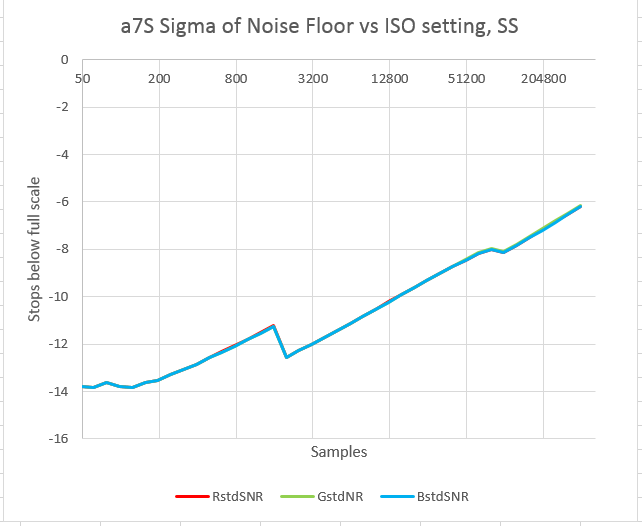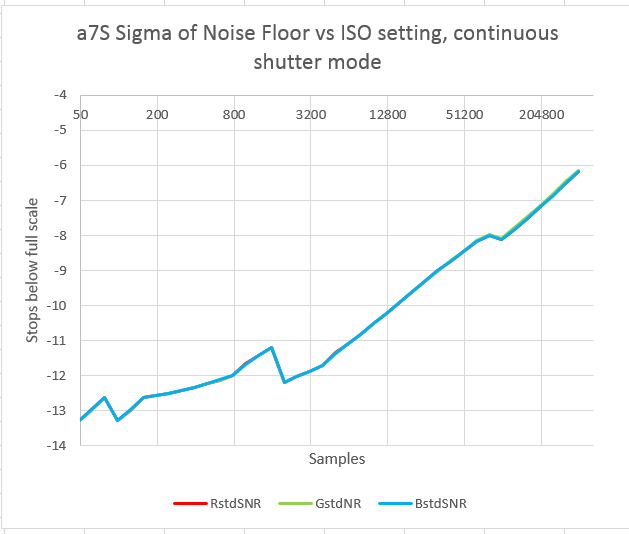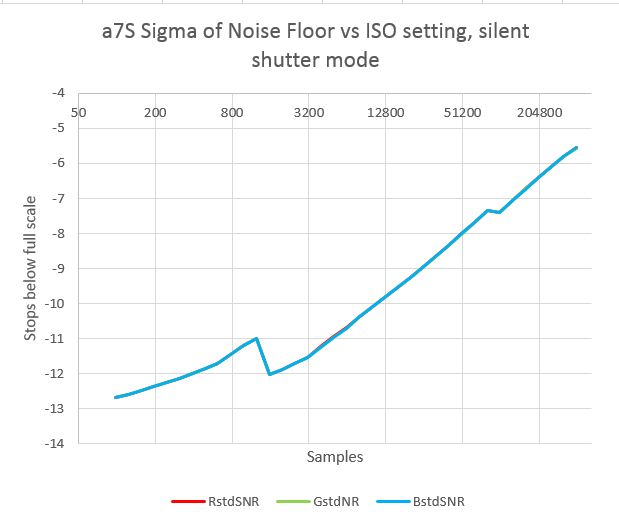I’m been showing you histograms of the Sony alpha 7S when making images of the back of the lens cap. We saw some evidence that the chip and/or raw processing was different at different ISOs. I suspect it’s the chip, at moderate ISOs, and processing at nosebleed ones.
To get a better look, I measured the standard deviation of the dark noise at 1/8000 second with the drive in single shot mode varying the ISO setting in 1/3 stop intervals:
There are three departures from the monotonically increasing straight line that ISO-less cameras exhibit.
First, below ISO 100 the read noise does not fall. This is entirely normal and expected. ISO 100 is the base ISO of the camera, and ISO settings below that should not normally be used.
Second, the noise drops more than one stop between ISO 1600 and ISO 2000. This is probably the result of a deliberate change to the conversion gain, and it is one of the things that make the a7S so good at high ISOs.
Third, there is a much smaller drop just before ISO 100K. That is the result of changes to the raw processing.
I have not seen any other’s report the lack of monotonicity versus ISO of the a7S read noise. I’d appreciate pointers to other’s conclusions on this subject.
Also note that the read noise never falls below 14 stops from clipping. I have seen reports of a7S read noise of less than that.
We know that the camera behaves differently with the drive mode set to continuous, so it makes sense to run the curves again for that condition:
The curves have kinks in about the same places. The low-ISO read noise is about a stop worse in continuous mode, which you’d expect since we lose a bit in that mode.
Here’s what the read noise looks like in single shot silent mode:
There are no points for ISOs below 100, because they are not allowed in silent mode. There’s nothing surprising here.



I use my Sony Alpha 7s very often in my job as private investigator.
Low-light abilities are incredible.